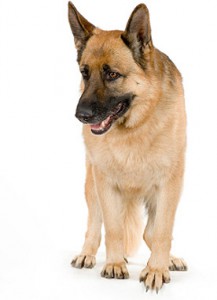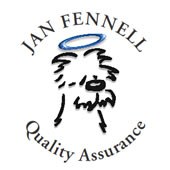Dog Listener, Leader – Parent, Provider, Protector
It was twenty years ago that I first picked up a copy of Jan Fennell’s revolutionary book ‘The Dog Listener’ and discovered that, even though I had grown-up with dogs (and horses) and believed I understood them, things were not in fact, quite as they seemed!
My own dog had recently started showing signs of aggression towards people, culminating in him nipping a child – every dog owners worst nightmare! I was seeking answers and solutions to this very serious problem and making things all the more confusing was the fact that Elijah – my two year old Lurcher – was normally a well mannered and friendly dog. He was extremely well socialised and it came as a big shock when he developed this rather serious problem behaviour!
Fortunately for me, Jan’s books ‘The Dog Listener’ and ‘The Practical Dog Listener’ were able to reassure me that Eli had not turned into a bad-tempered and aggressive dog, and over the following days and weeks through a process of understanding and communication, I was able to guide him away from the use of aggressive behaviour.
Many other things improved too, possibly the most significant of which was Eli’s recall. Although his recall wasn’t bad it could be a different matter if a hare or rabbit appeared under his nose. No matter how much I shouted and yelled he would not come back – it was as if he couldn’t hear me! I tried walking in the opposite direction (like you’re told to do) but he didn’t seem to care and would not return until the fleeing creature had been chased into the far distance!
Almost overnight this changed and for the rest of his life, if a hare, rabbit, pheasant or any other startled creature made off across the fields in front of him, Eli would look with interest but then carry on with me. I didn’t have to train Eli not to chase hares it was just one of the many positive side effects of Dog Listening!
I subsequently trained as a Dog Listener with Jan Fennell, and for the past 18 years, I have been providing guidance and support to individuals and their dogs on their journeys to harmonious relationships.
What is Dog Listening?
Pioneered by the world-famous Dog Listener, Jan Fennell, Dog Listening is a natural, force and gadget-free approach to living and working with dogs. By understanding how your dog thinks and how he perceives the world you can influence his behaviour in a kind and positive way and gain the trust, respect and cooperation that makes living with dogs the complete joy that it can and should be!
Ask yourself –
Why is my dog behaving in this way?
What is my dog thinking and feeling?
How can I change what my dog is thinking and feeling, so that he won’t behave in this way?
After observing the dogs direct ancestor – the wolf – in captivity and in its natural environment and then seeing this behaviour replicated in her own pack of dogs, Jan Fennell was able to understand the dynamics of pack life. She saw how individual animals communicated with each other, how they interacted as a group and how they responded to their environment.
With a combination of this knowledge, and an in depth understanding of how domestication – living alongside us – has shaped and moulded the domestic dog (especially in recent years) Jan was able to develop a system of communication between herself and her own pack of dogs.
By using signals – body language, eye contact and actions – that correlate with those that the wolf pack uses, Jan was able to establish a trust-based relationship, inspiring her dogs to – of their own free will – elect her as the leader of their family group; the pack. It is a dog’s belief that they are responsible for their family group that is at the root of most problem behaviour. By placing herself at the top of the pack hierarchy and taking the role of decision-maker away from the dogs, Jan was able to create a calm, harmonious and stress-free family environment.
This method is all about working with the nature of the animal, harnessing the powerful instincts that guide and influence the dogs behaviour. The dog can only behave according to these instincts, it has no choice in the matter and it is only by understanding and working with them, that we can influence their behaviour in a kind and positive way.
Why Dogs Need a Leader –
Parent, Provider, and Protector
Similar to their wild ancestors, dogs flourish in environments that provide structure and clearly defined roles within their social group. In a domestic context, this necessitates the human family assuming the role of leader, encompassing responsibilities as parent, provider, and protector. This leadership role is essential for ensuring a dog’s well-being, behaviour, and overall happiness. This article will examine the importance of adopting the parent, provider, and protector framework for the benefit of our canine companions.
Leader
Dogs are pack animals by nature, and in a pack, there are always leaders. The leaders provide direction, establish rules, and maintain peace. Without a clear leader, a dog can become anxious, confused, and may develop behavioural problems. As the leader, an owner must be calm, consistent and in control. This doesn’t mean being harsh or punitive; rather, it involves gently enforcing boundaries and providing guidance.
The Importance of Leadership
- Security: An effective leader instills a sense of security in a dog. When the dog understands that someone else is in charge, it can relax and refrain from feeling the need to take control.
- Behaviour: Dogs with a clear leader are less likely to develop behavioural problems such as reactivity, aggression, separation anxiety, or excessive barking. They are also more likely to walk calmly beside their owner when asked and return promptly when called.
- Instruction: Successful instruction is achieved when the dog recognises and respects the leader. Consequently, directions and guidance are more likely to be followed.
Parent
The role of a parent goes beyond providing basic needs; it encompasses nurturing, teaching, and guiding the dog through various stages of life. Like a human child, a dog depends on its parent for emotional support and learning appropriate social behaviours.
The Nurturing Aspect
- Bonding: Being a nurturing parent strengthens the bond between the dog and the owner. This bond is crucial for mutual trust and affection.
- Socialisation: An attentive parent understands their unique dog’s tolerance for stress and ensures that their dog is exposed to the appropriate level of stimulus and social experiences, according to their age, breed and mental/physical/emotional capabilities.
- Emotional Support: Dogs experience emotions similar to humans. A caring parent provides comfort and support in the right way, during times of stress, fear, or uncertainty.
Provider
Providing for a dog goes beyond just food and water; it includes ensuring that all physical, mental, and emotional needs are met. A well-provided dog is a healthy and happy dog.
Comprehensive Care
- Nutrition: Providing a balanced, minimally processed diet, tailored to the dog’s age, size, and health needs is fundamental for their well-being.
- Exercise: Regular physical activity is essential for maintaining a dog’s mental and physical health and preventing obesity and related diseases.
- Engagement: Calm and positive interaction with your dog ensures they feel valued and secure in your family unit.
- Healthcare: Understanding your dog’s nutritional requirements, minimising exposure to chemicals and toxins, and managing their exposure to potentially overwhelming situations can contribute to a healthy, happy, and longer life for your dog.
Protector
While dogs are known to protect their owners instinctively, they also require protection. This role involves ensuring the dog’s safety and well-being in various situations.
Ensuring Safety
- Physical Safety: Protecting the dog from physical harm, whether it’s from other animals, vehicles, or hazardous environments, is paramount.
- Emotional Safety: Creating a safe and stable home environment where the dog feels secure and not exposed to constant stress or fear.
- Advocacy: Being the dog’s advocate in situations where they cannot speak for themselves, such as during veterinary visits or interactions with other people and animals.
Conclusion
Some individuals aim to discredit the Pack Leader Theory, but it is important to recognise that an animal reliant on a human for survival requires specific behaviours from their caregiver, which align with the leadership role. Being an effective leader for your dog is beneficial for their well-being. It is important to approach this leadership with kindness, efficacy, and compassion, much like how good parenting provides guidance and boundaries for a child’s safety. Unlike children, who may eventually become independent and take on leadership roles, domestic dogs will depend on their human caregivers throughout their entire lives.
Pack theory has been criticised due to its misinterpretation and misuse by certain trainers and behaviourists. Leadership should not involve domineering actions or punitive measures. Rather, it should be based on trust, respect, and mutual benefit. A leader is someone who understands what actions to take in various situations. They are knowledgeable and make decisions that help ensure the safety of the group. A leader must earn the trust and respect of those they lead by consistently demonstrating their suitability for the role. An effective leader considers the well-being of the group and may prioritize the group’s needs over their own.
Jan Fennell’s approach is a holistic method based on understanding the dynamics of animals living in groups. By observing wolf packs and other group-living animals, including humans, it becomes evident that effective leadership is essential for the survival of the pack. In these groups, each member has a role, but leaders typically make critical decisions due to their greater experience. For example, in a human family, it is generally the adults who make important decisions rather than the children.
Twenty years ago, upon receiving Jan’s book, I was delighted to learn about an approach to living with dogs that emphasises kindness and understanding rather than authoritarian methods or reliance on excessive training. The way we interact with our dogs on a daily basis significantly influences their development. Our actions and responses to their needs and requirements shape their behaviour as they mature, driven by the principles of survival.
Fulfilling the roles of leader – parent, provider, and protector – is important for the well-being of a dog. Each element contributes to a balanced relationship between the dog and its owner. When these roles are effectively fulfilled, dogs tend to be more cooperative and well-adjusted. The time and effort invested in these roles are returned with loyalty and companionship from happy, healthy dogs.






